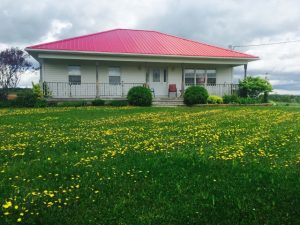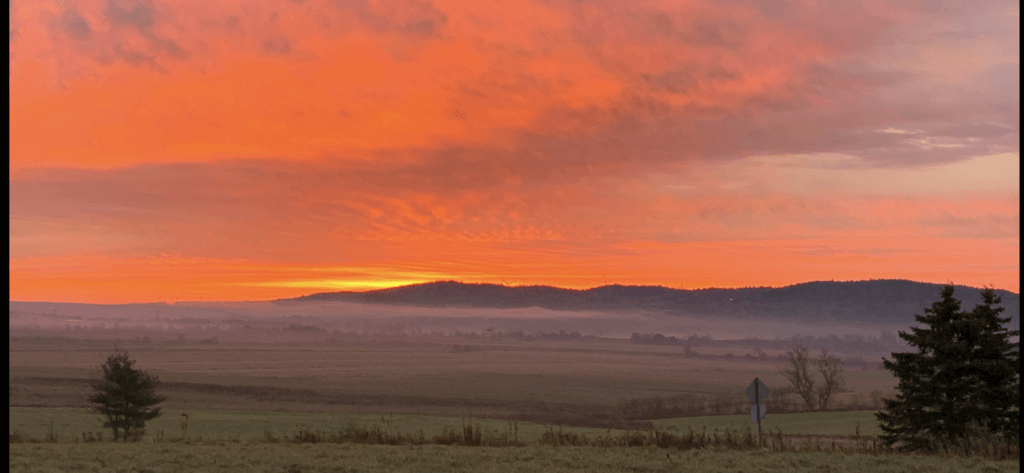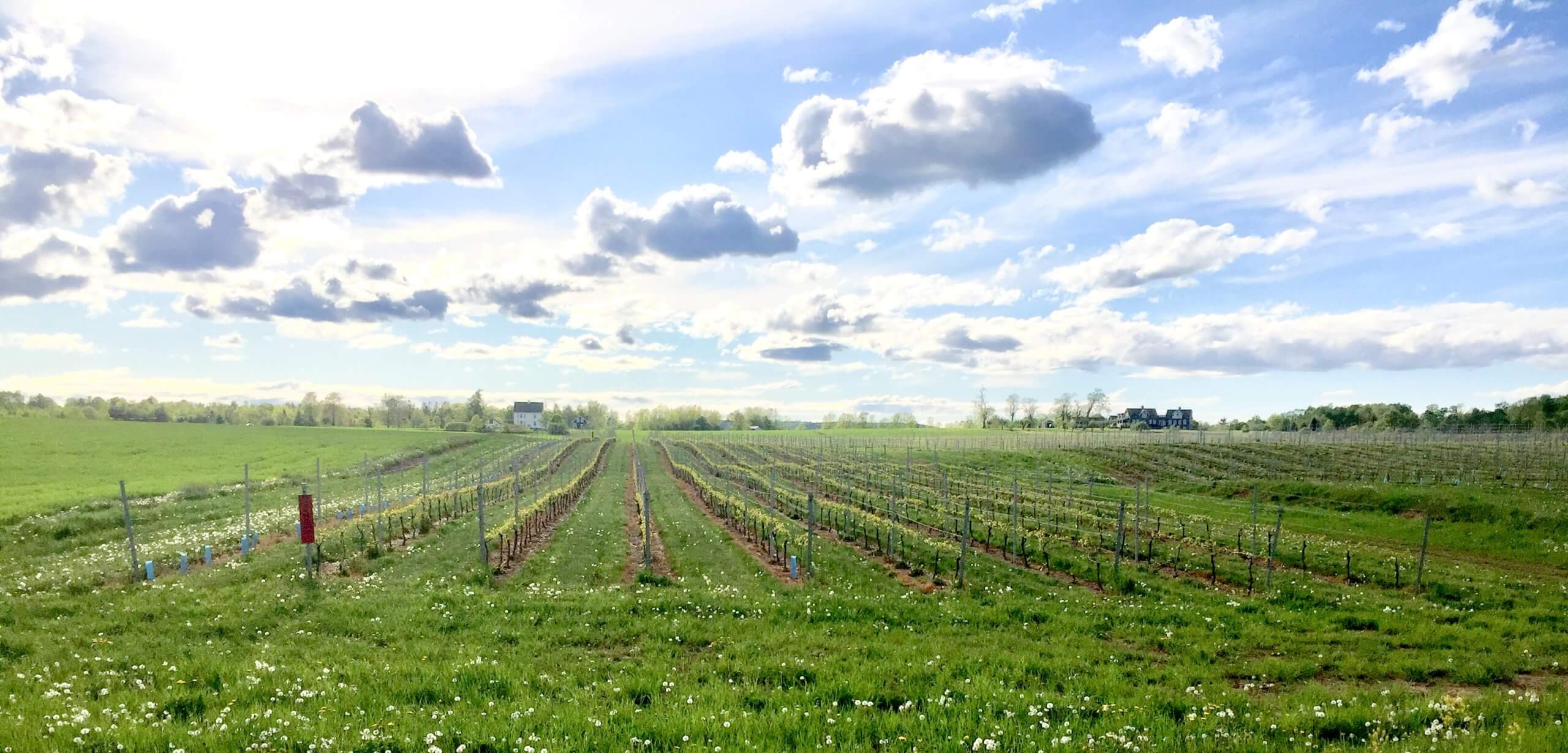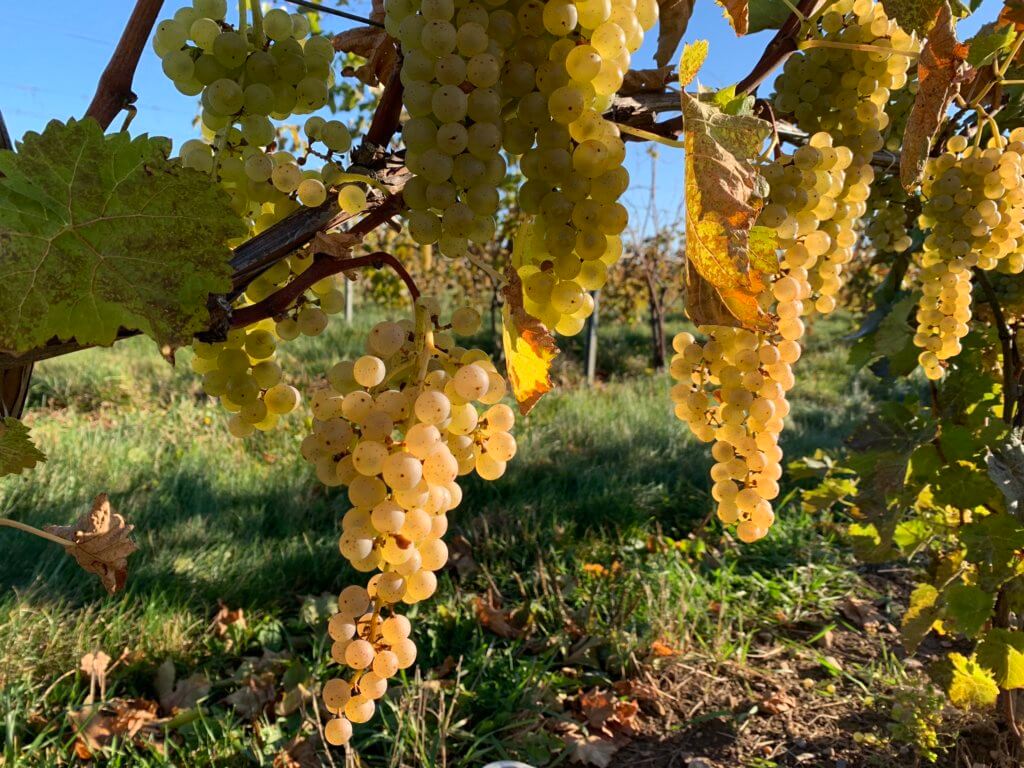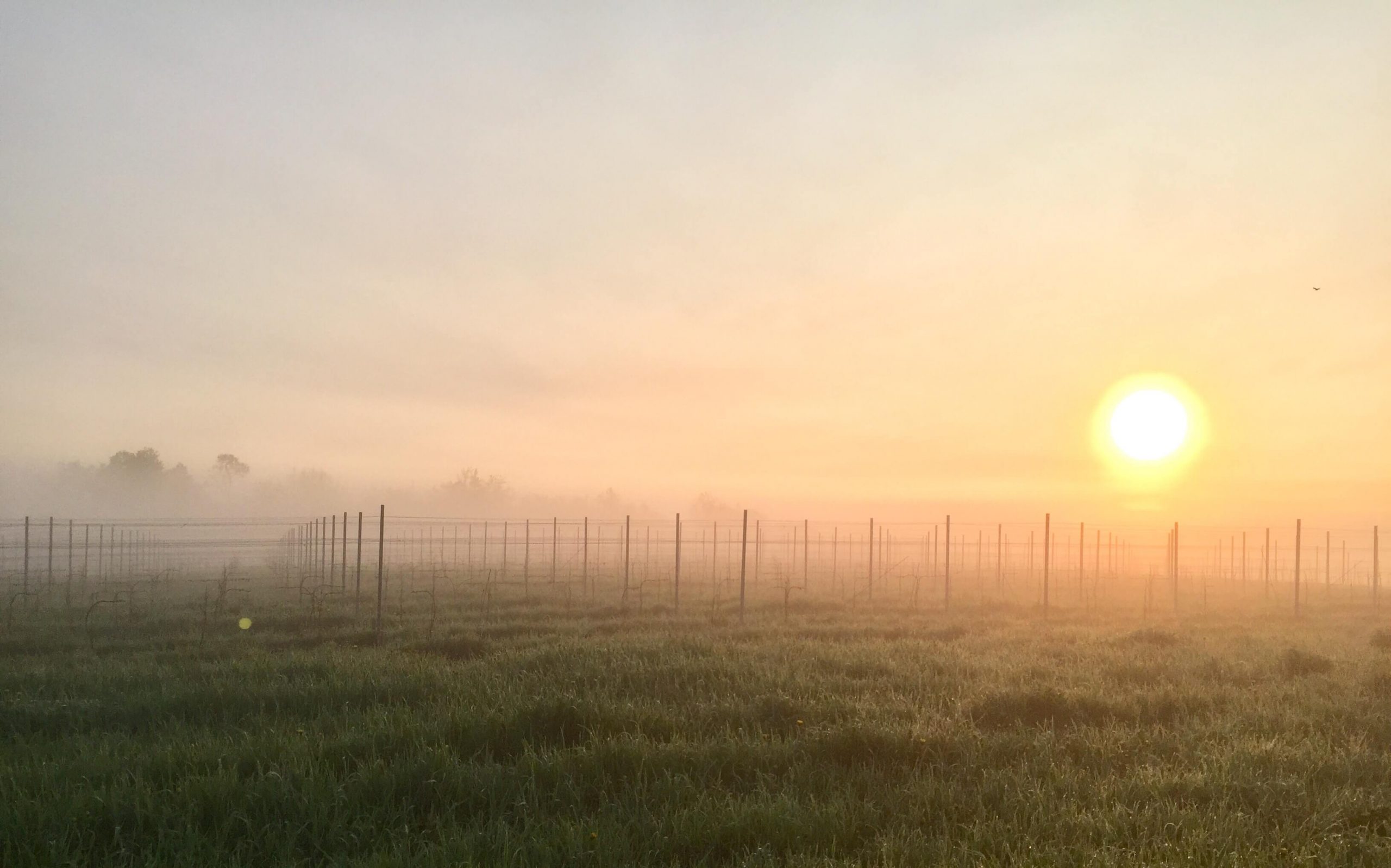Vine survival: The 14 acre upper section of Johnston Vineyards was planted last spring, a third of which consisted of vinifera vines. The Cabernet Foch/3309 2 year bare root plants did reasonably well but the one year potted vines nearly all died. The root ball was not disturbed. It rained often after planting. They were covered by grow tubes. The same thing happened with the potted NY Muscat which means that the poor result wasn’t related to the variety. It’s not clear what happened. The Marquette and to a lesser degree the Petit Pearl (both own root) were the stars of the vineyard. We will pick Marquette grapes this year. NY Muscat (own root) and Vidal (own root) grew moderately well. The Riesling 239/3309 and Chardonnay 548/3309 were healthy this spring and nearly all survived. The root stock 3309 on both of these varieties seemed to impart good vigor. A few rows of Chardonnay were planted on 420 root stock and were not as vigorous.
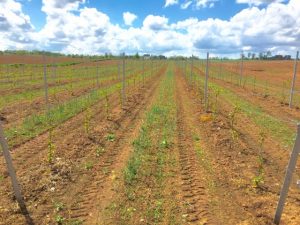
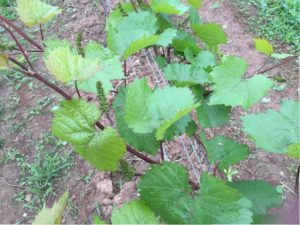
Soil preparation: Lime was spread on all 3 sections with the goal of achieving a pH of 6. It is expensive to buy, truck and spread lime. The total cost for all 3 sections was about 5800$. Boron and Sulphur was added to the 12-28-13 fertilizer spread on the upper section. The rows were planted with rye, clover and peas. Half the peas were killed by tire tracks caused by driving in the wet vineyard. The peas will be cut back rather than harrowed in and may still provide some nitrogen to the vines in July. Commercial nitrogen will be spread in July to give the plants a summer boost. The clover is spreading nicely. Seventy-five tons of chicken manure was spread on the mid section. Hauling cost was 1500$; the manure was 760$ and spreading was 1100$. It provides much more Phosphorus and Potassium than what is available with manufactured fertilizer. The high nitrogen content in chicken manure will contribute to the growth of the bare root vines planted this spring. A different and more efficient method of preparing the land in the mid section was conducted this year. Last year the upper section was ripped (pulling up the rocks), harrowed and ground cover planted after the vines were planted. This year all that was done before the vines were planted. The cover crop between the vines will be treated with a herbicide (Ignite). Much better! The 8 acre lower section will be planted in 2017. Lime was applied this spring and chicken manure will be spread this fall. It will be planted with mainly vinifera varieties in the spring of 2017.
Plantings: Seven acres of bare root vines were planted by Vinetech (thanks James!) with a GPS guided planter. Next year they will have a GPS guide tractor too. The rows were perfect and once the field was mapped the 7 acres were planted in about 6 hours. Since the ground was already ripped there were very few big rocks to work around. The planting consisted of 3 acres of Seyval Blanc/3309, 2 acres of Riesling 21B/3309 and 2 acres of Cab Foch/3309. Grow tubes were placed immediately after planting. The trellis will go up shortly. Another acre of Cab Foch and 3 acres of Petit Milo/3309 will go in the mid section in 2017. The Petit Milo planted in Nova Scotia currently is ungrafted and is being pulled out because of Phylloxera infestation. The grafted vines tolerate Phylloxera. Phylloxera is a risk for any ungrafted vine planted in NS, including the Marquette, Vidal and Petit Pearl planted at Johnston Vineyards.
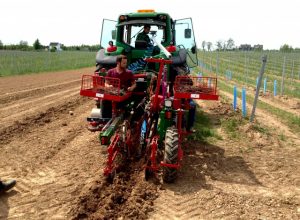

Weeds: There must be a simple solution to the weed problem but we at Johnston Vineyards are still grappling with it. Roundup was sprayed before bud break so contact with the vines didn’t matter. Some of the rows were not completely covered with the herbicide while other weeds didn’t seem to be killed by the roundup (it was cold when sprayed). They were spot sprayed again with Ignite (the buds were beginning to open so best to avoid a systemic herbicide). Once the leaves appeared it was risky to spray herbicide because the leaves were close to the ground for the less vigorous vines. For the vinifera and Cab Foch a sucker was preserved to bring up as a second trunk and it was at risk of being killed by the herbicide. A shielded device was constructed for the wand off the 25 gallon 45 psi tank carried on the RTV. One person drove and another walked the rows spraying with the shielded wand. This was very successful, but slow and the addition of another wand would speed up the process. The shield was removed for the pruned cold hardy varieties as leaves were well off the ground. Better spray coverage in the early spring would allow a later spray when more vines were pruned and the second trunk was better established. I am currently looking at a boom that can be attached to the RTV to spray pruned 2 year old vines. This can also be used to spray the recently planted mid section since the grow tubes protect the plants from the herbicide. The hope is that a grape hoe will be adequate to control the weeds after the initial herbicide application on the 2 year old vines. It is more problematic to hoe 1 year vines since the roots are more likely to be disturbed and the grape rods need to be affixed to the fruiting wire to trigger the back off mechanism of the hoe cutting blade. The rods will not be attached before the weeds take over because of the grow tubes on the rods (which won’t come off until the end of August). The hoeing needs to be repeated several times to condition the soil and remove rocks between the vines to achieve optimal results. Johnston Vineyards has one on order from Klaus Sudbrack (Shemogue Custom and Trellis, New Brunswick). With the successful use of a grape hoe it will not be necessary to invest in a larger tractor mounted sprayer. It is also logical that repeated cultivation under the vines is beneficial for general plant health.
New personnel: Ian Kaye continues to provide invaluable advice as the vineyard consultant. He also runs a crew that is essential to an operation like Johnston Vineyards that doesn’t have a crew. He has changed his company name to Inscenza Capital Inc. I have no idea what that name means. Wayne Sexton of Wayne’s Land Improvements, Falmouth was asked to be vineyard manager. This is currently a part time position but is essential to the success of Johnston Vineyards. Wayne has been around farming in Falmouth all his life and is completely at ease with vineyard equipment.
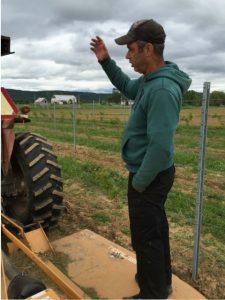
New home on the property: Johnston Vineyards now owns the red roofed house at 1096 Falmouth Dyke Rd.
